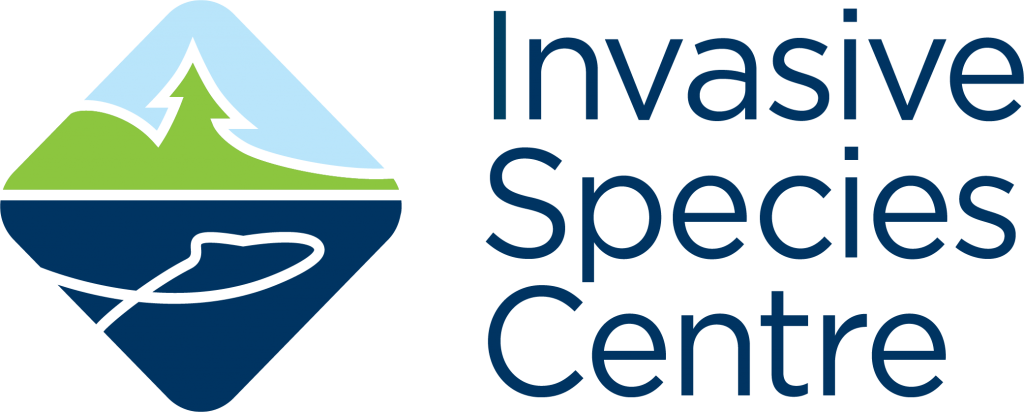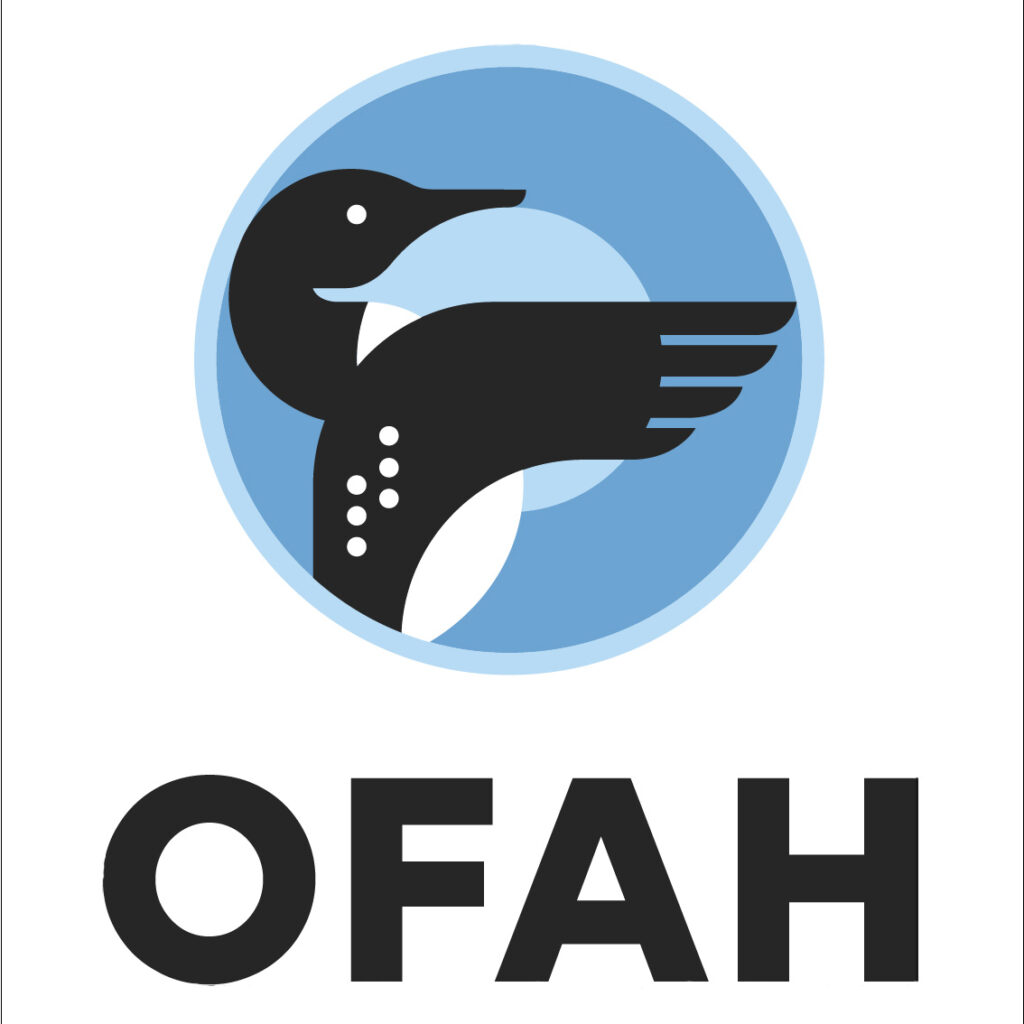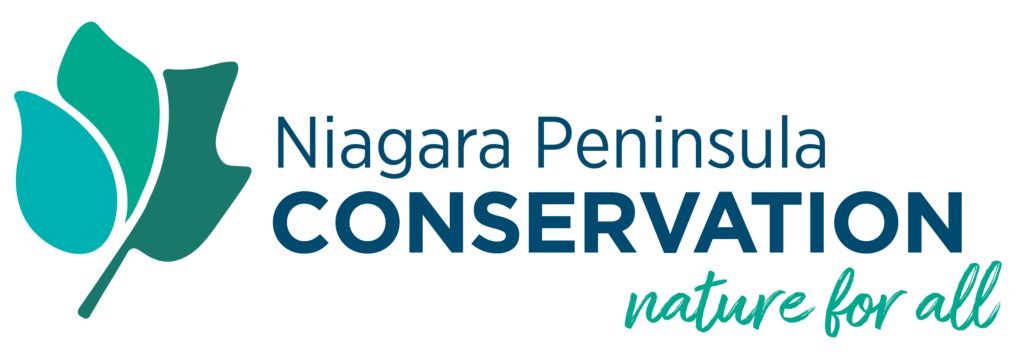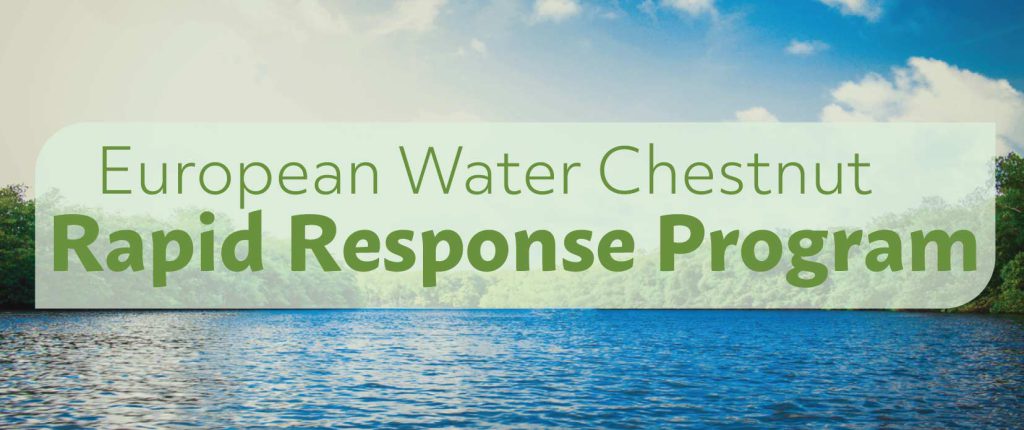
European Water Chestnut (EWC) (Trapas natans) is an aggressive invasive aquatic plant that has been detected in the Welland River. The Invasive Species Centre (ISC) is leading a Rapid Response Program to remove EWC from the Welland River with support from the Ontario Federation of Anglers and Hunters (OFAH) and the Niagara Peninsula Conservation Authority (NPCA).
On this page:
Paddle with a Purpose Tours – Save the dates for Summer 2024!
European Water Chestnut
European Water Chestnut (EWC) (Trapa natans) is an annual invasive aquatic plant that was detected in the Welland River in 2020.
EWC is a prohibited species in Ontario under the Ontario Invasive Species Act (2015), meaning it is illegal to import, possess, deposit, release, transport, breed, buy, sell, lease or trade the plants. For a species to be listed under the Act, it must also have potential to cause harm to Ontario’s economy, environment and society. EWC can cause the following harmful impacts:
- Shades out native species and reduces biodiversity
- Develops into dense floating mats that can affect various types of recreation such as swimming, fishing, paddling, and boating
- Dense mats decompose every year and create anoxic conditions in the river, affecting fish species and species-at-risk like freshwater mussels
- Drops sharp seeds that can cover the substrate, slice skin and be painful to step on
- Negatively impacts local recreation and related economies
- Impacts private river front access and property values
In 2021, the Invasive Species Centre surveyed the river to assess the population. Fortunately, it was determined that a rapid response effort to manually control the plant would likely contain the population and reduce its spread throughout the Niagara Region and further into Ontario.
EWC Rapid Response Program
The Plan: Contain and Eradicate
With support from the Ministry of Environment, Conservation, and Parks’ Great Lakes Local Action Fund and the Ontario Federation of Anglers and Hunters (OFAH) Hit Squad Program (via Canada Summer Jobs), the Invasive Species Centre and the Niagara Peninsula Conservation Authority (NPCA) launched a Rapid Response Program in 2022 to contain the spread of EWC in the Welland River. The program aims to contain the population within 4 years. EWC seeds can survive and sprout for up to 10 years so the initial control efforts will be followed by a monitoring and maintenance program.
Year one of the EWC Rapid Response Program concluded in 2022, with the ISC successfully removing the known extent of EWC in the Welland River. See the CBC article here.
Over year two of the program saw a successful reduction in the annual growth of the EWC plant and no known extension of infestation through out the river. The ISC removed the total annual growth of EWC in the Welland River.
Stop seed production
EWC is an annual plant. Annual plants grow from the previous year’s seed. By removing the plant before it produces seed, the population cannot sustain itself and the number of plants emerging each year declines. Ducks Unlimited Canada and Ontario Parks have been fighting EWC in Eastern Ontario for over 5 years, and their progress is encouraging. Ontario Parks recorded 95% reduction in seed viability after 4 years of manual control. Given the relatively early state of establishment in the Welland River population, eradication is feasible.
To stop seed production in the Welland River, our team manually removes (hand-pull) EWC from the river between June and September using canoes and a motorboat. Biomass is disposed of at the NPCA properties on the river, Chippewa Creek CA, and E.C. Brown CA more than 30 meters from the shoreline to ensure all plant material remains out of the river.
Opportunities to Help
- Learn to Identify EWC
- Report Observations to EDDMapS
- Paddle with a Purpose
- Support the Field Team
- Clean, Drain, Dry
- Don’t Let it Loose
Learn to Identify EWC
EWC grows from seed settled on the river bottom. Plants emerge in late June and form rosettes on the top of the water. Rosettes are a light, shimmering green measuring up to 30 cm in diameter and can be found in clusters or floating alone.
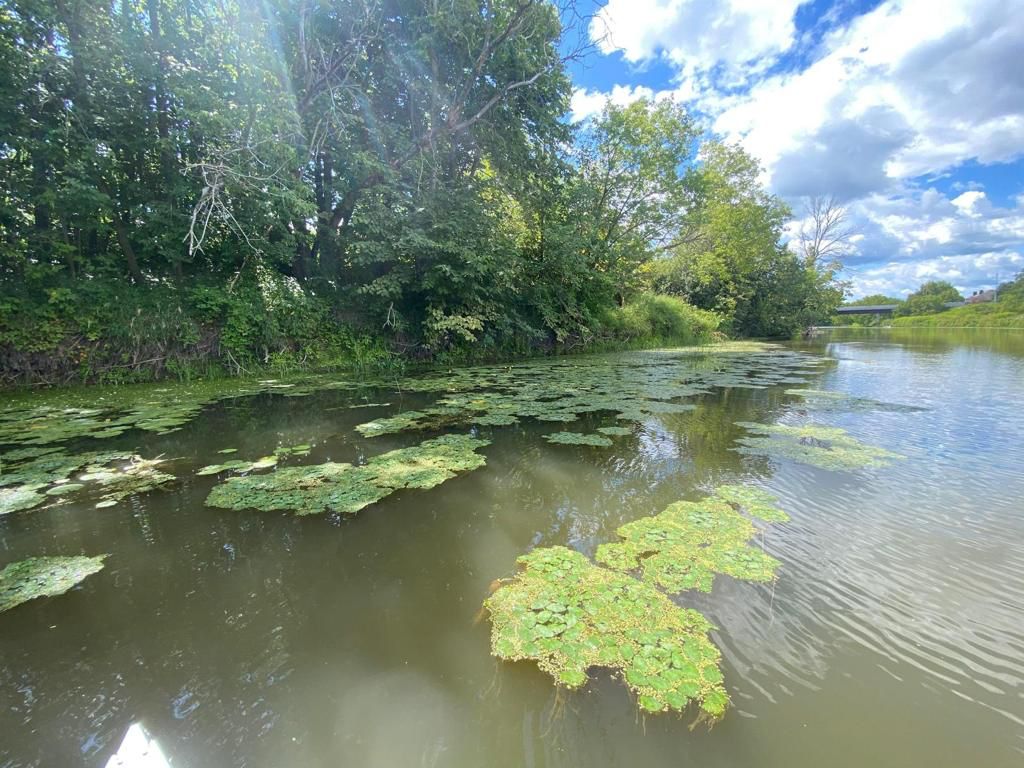
EWC will flower in July. Flowers are small and white and appear in the middle of the rosette.
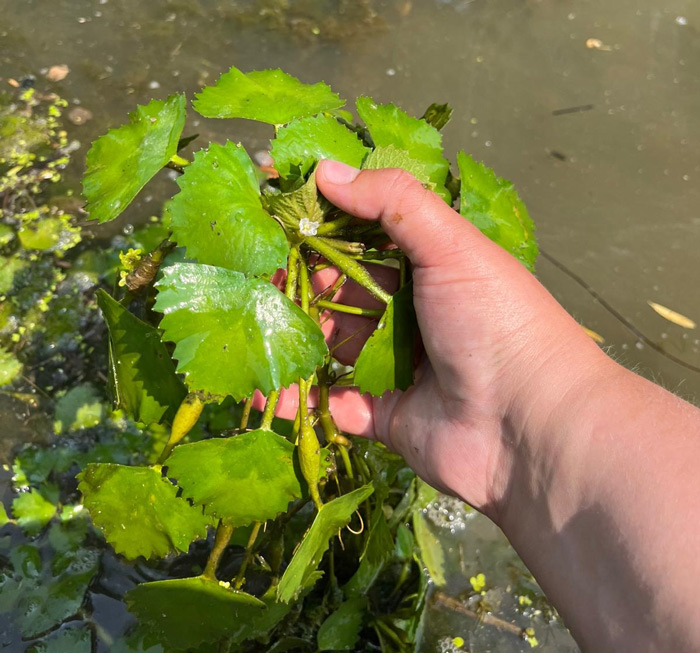
Each rosette can produce up to 20 seeds per growing season and each stem can have up to 20 rosettes. These seeds can then produce up to 10-12 stems. Mature seeds will drop to the bottom of the river in late August. Some seeds may be transported to other areas by waterfowl or boats.
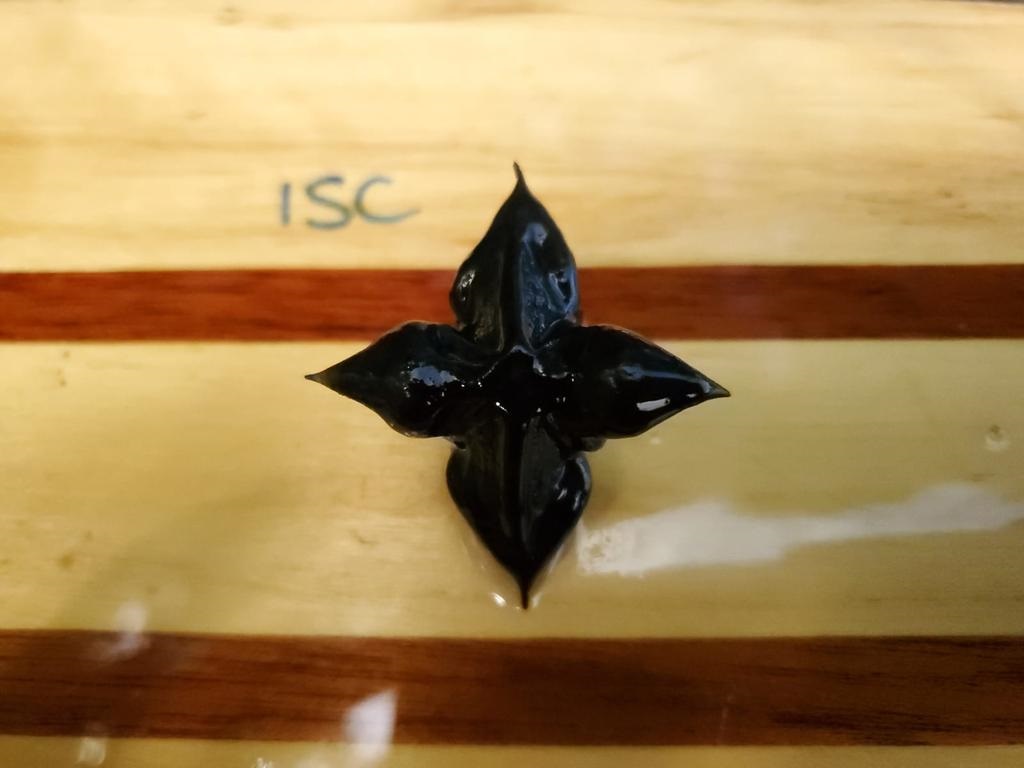
Plants will decompose in the fall. There will be no evidence of EWC in the river until the following spring.
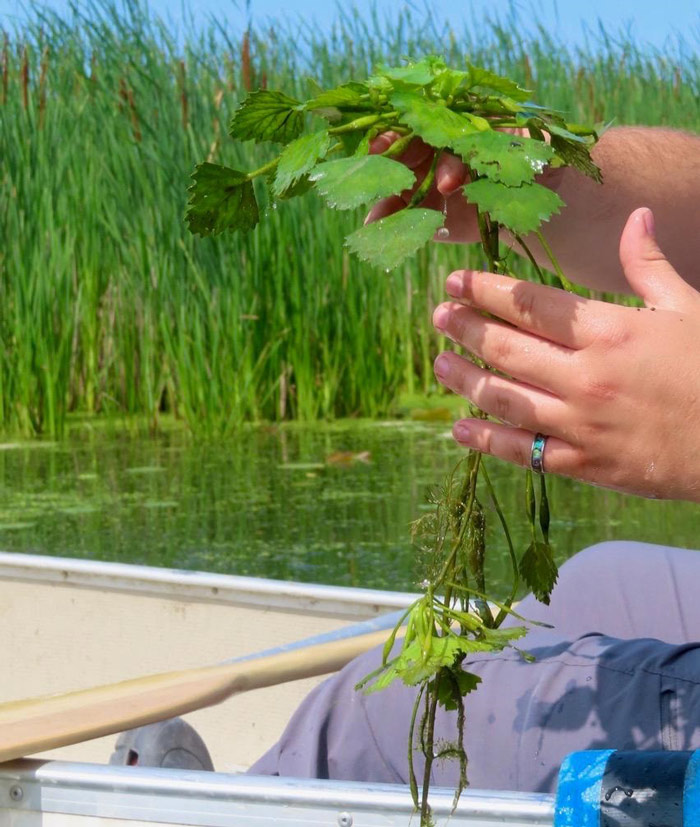
Report Observations on EDDMapS
- Download the EDDMapS Application and create/log in to your account
- Choose to report a new sighting
- Insert:
- Species you are reporting
- Observation date
- Photos
- Report location or turn on location services. You can edit the report to show your exact location. You can also edit to show infestations by drawing polygons to show the exact spot
- Save and upload to the queue.
For more information on reporting to EDDMapS, visit eddmaps.org.

Recreational paddlers are encouraged to ‘Paddle with a Purpose’ this year in waterways across Niagara. Learn more about identifying and reporting invasive species to help keep your favourite recreational spaces protected from invasive species.
The 2023 Paddle with A Purpose Tour saw over 20 volunteer paddlers where they learned how to identify and report EWC. The paddlers also had a chance to remove a small infestation of EWC out of the Welland river.
The ISC would like to thank all the participants from the 2023 field season. With your help the team was able to remove the total annual growth of EWC in the Welland River.
The program is offering two paddling tours this year. Both events will launch from EC Brown public boat launch (River Rd., Fenwick, Pelham, L0S 1C0; see map location here). Paddlers will head west toward Wellandport for ~1.5 km to find the first known population of EWC.
- Saturday, July 20 from 9-11:30 a.m. | Register here.
- Friday, July 26 from 9-11:30 a.m. | Register here.
- If you have any questions, please email kchurch@invasivespeciescentre.ca
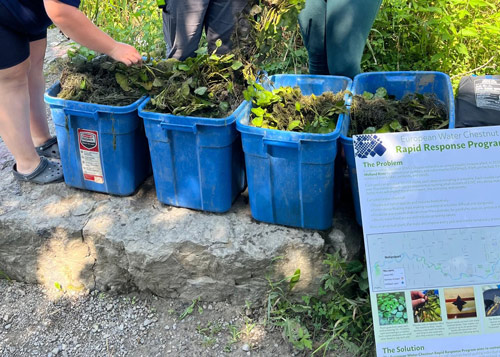
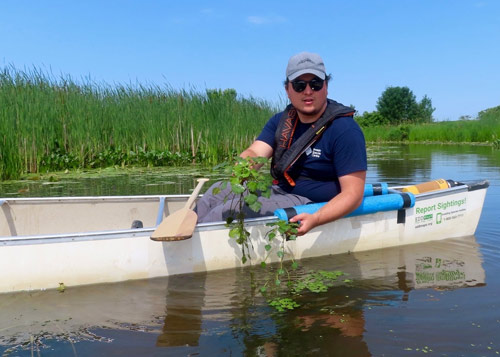
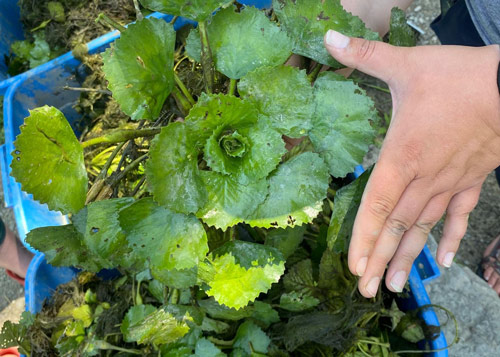
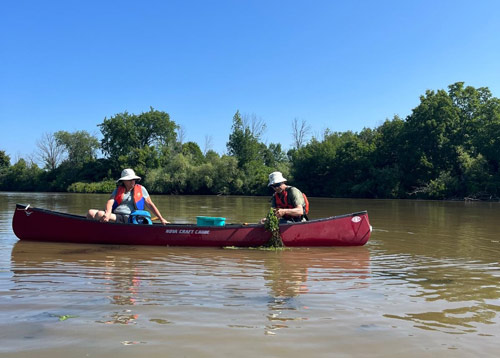
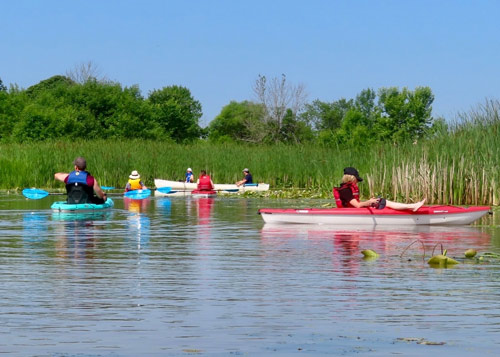
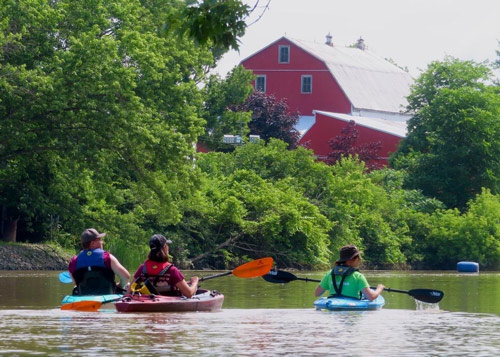
Support the Field Team
The OFAH Hit Squad Field Team will be on the Welland River removing EWC from June 17 – August 30. They will be using canoes and one small motorboat. Riverfront landowners are encouraged to support the field team in the following ways:
- Provide river access for canoes and/or a small boat on a trailer
- Provide emergency exits/shelter in case of inclement weather or health emergency
- Offer remote locations for biomass disposal to reduce travel time to Conservation Areas
- Provide a place for off-river health breaks
If you think you can help the team – please contact the program coordinator Katie Church (kchurch@invasivespeciescentre.ca). Your location can be identified with an icon in the Arc GIS Field Map that the team can access on a smartphone. These locations can be anonymous or include your name and contact information.
More Ways to Prevent Invasive Species
Clean, Drain, Dry!
The most important way you can help reduce the spread of aquatic invasive species is to ensure that your boat is decontaminated between EVERY waterway you access. As of January 2022, it is now the law in Ontario to take reasonable measures to clean, drain, and dry your watercraft and equipment. EWC can be spread through contaminated boats.
Step 1: Clean your boat from top to bottom by removing debris including plants and mud and wiping it down. Rinsing with hot or pressurized water is an additional precaution that will further prevent aquatic invasive species spread when feasible.
Step 2: Drain all water from your boat by opening and removing all drain plugs and ensuring there is no water left in the seating area or any other compartments.
Step 3: Dry your boat from top to bottom with a towel. Leaving your boat to dry in the sun will help reduce the chance of moving AIS between waterbodies.
Don’t Let It Loose!
EWC was an ornamental species that was likely released into the water by intentional or unintentional means. Aquatic invasive species can be spread when people release them directly into waterways, or they escape through water gardens that are connected to other bodies of water.
Most garden species can be placed in garbage bags and placed in the sun for several days to dry out and prevent possible germination. Be sure to properly dispose of invasive plants as waste and far from bodies of water.
